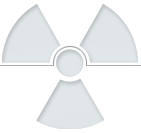

Recent design: Brachytherapy calibration phantom 2

Recent design: Brachytherapy calibration phantom 2

Recent design: Brachytherapy calibration phantom 2

Recent design: Brachytherapy calibration phantom 2

Recent design: Brachytherapy calibration phantom 1

Recent design: Brachytherapy calibration phantom 1

Recent design: Brachytherapy calibration phantom 1

Recent design: Brachytherapy calibration phantom 1

Brachytherapy calibration phantom 1

Brachytherapy calibration phantom 2

Brachytherapy calibration phantom 1

Brachytherapy calibration phantom 1

Brachytherapy calibration phantom 1

Brachytherapy calibration phantom 1

Brachytherapy calibration phantom 2

After experiment

After experiment

After experiment

After experiment

Brachytherapy calibration phantom 1

After experiment
Brachytherapy calibration phantom 1: item catalogue number: PH-1a-BRA
Recent design - see the photographs above.
Description:
Height: 170 mm (+ 10 mm: a filler plug)
Inner diameter of the main part available for irradiation: 80 mm
Height of the main part available for irradiation: 90 mm
Width max (lower lid: stand): 120 mm
Equipped with a quartz, closed-end tube (outside diameter: ~4 mm;
inside diameter: ~2.4 mm) that is adapted for inserting a plastic brachytherapy catheter
(outside diameter: ~2mm)
Polymer gel volume: approximately 650 cm3
Brachytherapy calibration phantom 2: item catalogue number: PH-1b-BRA
Recent design - see the photographs above.
Description:
Height: 170 mm (+ 10 mm: a filler plug)
Inner diameter of the main part available for irradiation: 80 mm
Height of the main part available for irradiation: 90 mm
Width max (lower lid: stand): 120 mm
Adapted for inserting a plastic brachytherapy catheter (outside diameter: ~2 mm)
Polymer gel volume: approximately 650 cm3
Some features of the phantoms:
- No bending of a catheter inside a gel dosimeter owing to the construction of the phantoms!
- Phantoms (new design) equipped with a pressure-compensating valve*.
- Very easy to operate.
- Very easy to clean.
- For multiple use.
- The construction enables tight closure and the separation of a polymer gel dosimeter composition from oxygen.
- Transparent walls for observation of the irradiation effects in a polymer gel dosimeter.
- They are made of plastic. They can be scanned with MRI, CT or OCT.
*The pressure-compensating valve has been designed to compensate for changes of pressure inside a polymer gel dosimeter during and after the filling up of the phantoms, as well as during solidification of the gel dosimeter. Some polymer gel might shrink slightly during the solidification, storage or under ionising irradiation. The valve is intended to improve the performance of the dosimeters. The valve can be filled with an inert gas before or after the filling up of the phantom with a gel dosimeter composition (not obligatory). It can also be dismantled, if pressure compensation is not necessary.
A hint
For calibration purposes, the Brachytherapy calibration phantom should be filled in with a polymer gel dosimeter. Afterwards, a catheter should be inserted. Next, when the gel dosimeter is ready, the Brachytherapy calibration phantom can be connected to an afterloader for irradiation of the dosimeter. The user can perform the calibration with the Brachytherapy calibration phantom 1 or 2. The difference between them is that the second offers the possibility of inserting only a plastic catheter. According to research, some catheters might allow oxygen diffusion into the gel dosimeter. This is undesirable if a dosimeter is oxygen-sensitive. In such a case, one could use the other Brachytherapy calibration phantom of GeVero Co., which is equipped with a quartz/glass, closed-end tube (wall thickness below 1 mm) impermeable to oxygen and adapted for inserting a plastic brachytherapy catheter. See also a movie: Software for 3D dosimetry/Calibration Workspace/Brachytherapy calibration. The calculation of the brachytherapy calibration curve and calibration equation can be performed with the aid of the polyGeVero®software (item catalogue number: S-2POLY-1).

